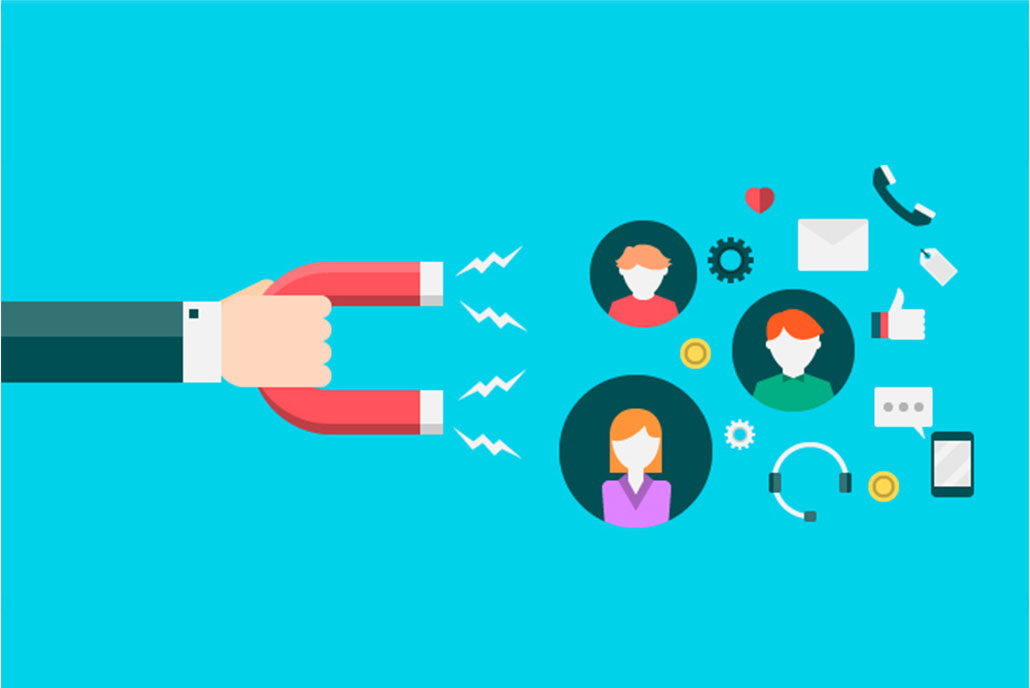
[ad_1]
Imagine if the second someone walked onto your casino, you knew: the color they just painted their living room, the fact that they just had a baby, their favorite places to shop, their love of martinis, and the last few vacations they’d gone on.
It’s not far off.
We buy everything online—paint swatches, strollers, barware, flight tickets. And with the rise of loyalty programs, big data, and online tracking pixels—marketers can have greater insight than ever before into their customer’s day-to-day lives.
All this is just to say: neglecting a data strategy is a huge missed opportunity for your casino’s marketing efforts. And when you leverage your customer data—you change the way you optimize rewards, encourage loyalty, and distinguish yourself from your competitors.
In this article we’ll cover:
-
- How casinos used data in the past—and the game-changing ways you can start using data now.
-
- The ways customer data can influence every stage of your marketing strategy.
- The unique advantage data gives you, in an attempt to win over customer loyalty.
Customer data then: the green sombrero test
None of this is completely new.
For decades, Casinos have relied on quantitative metrics to make small operational changes. But it was done in ways that were limited, or imprecise.
In the past, the best example of “tracking customer analytics” was a green sombrero test—an experiment run by Ceasars to see if cash giveaways on bus trips were generating a profit.
And the “green sombrero” here was not a metaphor.
They literally gave everyone on a bus $20, and green sombreros. And they watched how the people in the hats behaved.
Casinos have evolved since then, but they’ve still fallen behind other industries in their use of analytics.
Here’s are a few ways it’s worked in the last decade:
-
- Casinos would note how much a certain type of slot machine got played. They would make informed decisions about which slot machines to purchase in the future—based on which themes were more appealing.
-
- Casinos might move around machines, or tables, and pay attention to how the floor layout impacted player decisions.
-
- Casinos would keep track of what performers or special events brought in the best crowds—and book accordingly in the future.
- Casinos would look at player behavior and use predictive analytics to determine more realistic odds.
But all this still falls short of how other industries have leveraged customer data—as frustrated executives across the industry have noted. Most of this comes down to the lack of customer data being collected—and the fact customers behavior is only being collected at specific times: in the casino, while they play in an online casino, or throughout an accompanying resort.
Customer data now: winning customers, and improving products
The team at Caesars has come a long way from passing out hats on busses.
Their chief analytics officer, Gene Lee, has broken down their new analytics goals into two categories: customer and product. On the customer side—they’re using behavioral data to start offering smarter incentives, at strategic times. On the product side: they’re looking to develop their offerings as a whole based on how people engage with their casinos and results.
This takes a solid understanding of their customer behavior within their casino—something they can track with a solid casino management system.
But if customer loyalty, and customer behavior, is really about free upgrades and better incentives, casinos can go a step further than just offering people food discounts when they might be hungry, or a room upgrade when they extend their stay.
Robust loyalty programs offer rich data about customers, their preferences, and their needs—outside of just what you can observe within a casino or resort.
Coalition loyalty, specifically, is on the rise across most major industries. Relying on affiliates, coalition loyalty programs allow business to reward their customers with points whenever they make purchases with partner businesses.
.kt-btns_d4fdd6-55 .kt-btn-wrap-0 .kt-button {padding-left:22px;padding-right:22px;padding-top:18px;padding-bottom:18px;color:#ffffff;font-size:22px;background:rgba(30, 32, 65, 1);border-color:rgba(85, 85, 85, 1);}.kt-btns_d4fdd6-55 .kt-btn-wrap-0 .kt-button:hover, .kt-btns_d4fdd6-55 .kt-btn-wrap-0 .kt-button:focus {color:#555555;border-color:rgba(68, 68, 68, 1);}.kt-btns_d4fdd6-55 .kt-btn-wrap-0 .kt-button::before {display:none;}.kt-btns_d4fdd6-55 .kt-btn-wrap-0 .kt-button:hover, .kt-btns_d4fdd6-55 .kt-btn-wrap-0 .kt-button:focus {background:rgba(255, 255, 255, 1);}@media (min-width: 768px) and (max-width: 1024px) {.kt-btns_d4fdd6-55 .kt-btn-wrap-0 .kt-button {}}@media (max-width: 767px) {.kt-btns_d4fdd6-55 .kt-btn-wrap-0 .kt-button {}}
That may sound dense—but here’s what it means for casinos.
In the past, customers might drop casino loyalty programs, or be resistant to pick one up in the first place. If they only play a few times a year, and they can only earn points when they play—it might not be worth the trouble of juggling another set of rewards.
With coalition loyalty—they earn points when they shop online, anywhere your program partners with. And casinos earn data—as a result of what they buy.
Give the people what they want: transforming your casino’s marketing with customer data.
Whether it’s a green sombrero, a rich casino management system, or a powerful customer loyalty program—there are more ways to collect customer data than ever before.
So once you have it—how do you use it?
Let’s talk about how data can revolutionize how your casino marketing: goal-by-goal, use case-by-use case.
Customer Acquisition:
Knowing your existing customers better, means you can appeal to new customers more effectively.
Say, for example, one of your coalition loyalty program partners is Target.
You see that many of your customers shop at Target to earn points, and make multiple monthly purchases on the platform. You know they almost always vouch for delivery over in-store pickup. And they have a relatively large order size.
What have you learned about your primary market base?
Online, Target shoppers are different than in-store, Louis Vuitton shoppers. You’ve learned that they’re probably time-conscious, and budget-conscious—rather than service-conscious or status-conscious. That, in and of itself, gives you useful insight into how to maximize your advertising spend.
You’ll also learn that your potential customer base is more likely to value “fun” messaging over “luxury” messaging. And they might respond to “take some time away” messaging over “be a VIP” messaging.
Pragmatically: you know you can advertise to new customers on the Target website—and you’ll be reaching your target market.
Multiply this one data point, by the dozen of other online retailers your customer loyalty program might include. Then consider layering it with data on their behavior—when they do come in to play.
What you get is a total picture of who buys from you now, and who might buy from you in the future—and how you can tailor your offerings to bring more people in the door, and keep people coming back.
79% of customers say “I only consider brands that show they understand and care about ‘me.’”
Customer Retention:
Getting people to come back.
It’s one of the biggest challenges facing casinos—and one of the biggest benefits to truly leveraging your customer data, and truly understanding your customers.
Because, sure. You might be competing against other casinos. But you’re also competing against hundreds of other vacation spots, entertainment options, or online gambling alternatives.
You want your customers to come back because they’re loyal—not because you have the best entertainment on a given night, or you offer a special promo that impressed them once. And you want them to come back because, across industries, 15% of a company’s most loyal customers make up anywhere between 55% and 75% their business.
More and more, the key to unlocking customer loyalty in casinos comes down to personalization: offering the right things, to the right people, at the right times—and making your customers feel valued.
Customers have grown to expect this special attention so much, that 79% of them say “I only consider brands that show they understand and care about ‘me.’” And only 25% of people feel satisfied with the personalization of their customer loyalty program.
And showing your customers that you care about them, is much easier when you know: what amenities they might enjoy, when they’re most in need of a time to “unwind,” what they drink, what they do to relax, and what announcements and promotions they would actually find exciting.
A competitive advantage:
Let’s say two women go to Las Vegas on vacation. One, Tiffany—heads to Casino A. The other, Sarah heads to Casino B.
They both have a pretty good time. They both, somehow, end up seeing The Backstreet Boys. They decide “hey—this was really great. I’d like to come back again.” And they both sign up for their respective casino’s loyalty programs.
Say Casino A’s marketing strategy is based on data. Casino B’s is not.
All year, Tiffany earns points at her casino’s loyalty program by shopping online. She sees ads on the websites of her favorite stores—reminding her of how great a time she had at Casino A.
From time to time, she’ll get an email—offering her a special promotion based on her last visit. “Wow,” she thinks “They remembered that good review I left about the restaurant. That’s really thoughtful, and this is a pretty good deal…”
She’ll occasionally hear about a band she loves performing, or an offer she can claim by using the points she’s already earned. She usually takes time off from work in the spring, and wouldn’t you know it! They’re offering a spring break promotion that’s right up her alley. Tiffany is excited to return to Casino A.
Sarah, on the other hand, signed up for the loyalty program at Casino B. She really only visits casinos a few times a year—so she doesn’t earn new points, or engage with the loyalty program in any way, until she’s back in Vegas again.
She does, however, get consistent, kind of annoying emails from the casino. Every time they offer any promotion, it shows up in her inbox. Most of them aren’t related to her, so she marks them as “spam.” She does book another trip to Vegas for next year—but when she does, she reads online reviews on where to spend her time and money. She picks whatever has the best deal that given week.
In this example: Casino A didn’t do anything radical. They sent a few targeted offers. They stayed top-of-mind throughout the year. They showed that they paid attention to their visitors wants and needs.
In the end that was all they needed to make a memorable, powerful impression on a former customer. A former customer who may spread the word about their offerings to her friends, post photos of her trip on social media, and come back to Casino A time and time again—for years to come.
This is the potential casinos have to make an impression with data.
And it’s time they start bringing their Casino-A-game. Their customers—present and potential— expect it.
[ad_2]



